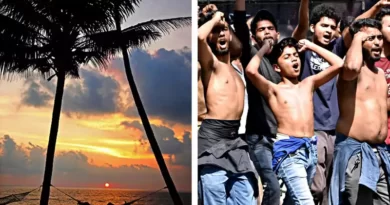Chinese economy is caught in a cleft stick
Chinese modernisation began with limited capital. In a twist of irony, it has large foreign exchange reserves abroad and banking crises at home
Since Deng Xiaoping’s reforms, it was clear that the class profile of Chinese society would change. A new bourgeoisie would emerge, and the petit bourgeoisie would enlarge itself with more money in its pockets. The proletariat would become prosperous. Perhaps the only class of people who could get left out of this economic revolution was the peasantry. When I asked my Marxist acquaintances as to how the ruling party would remain communist and yet cope with the changing expectations of people, their bland reply was that they will “manage”. After all, many of the national assets are owned by the party; even the armed forces and the armaments are party-owned. So are the shares of newly created corporations.
To someone like me who has grown up in India, it seemed a wonder as to how an ideologically dyed-in-the wool party can manage all classes of society. Evidently by force, was the answer. The communists reckoned there would be no problem since the Communist Party of China (CPC) practices politics which a typical Marxist does not recognise. A European professor had once explained to me the reason for this. The communist obsession is with the proletariat; the other classes matter little. The bourgeoisie and the landlords were marked out for extermination at the beginning of the revolution. The petit bourgeois should be watched and selectively also be exterminated. The farmers, other than the landlords, were the kulaks, peasants with limited land and had to be collectivised. The landless peasants willy-nilly must join the communist movement. Inner-party democracy is all that is possible; this is at best collective leadership as distinct from the Fuhrerprincip practised by the Nazis. At most, the entire communist party Politburo might be consulted on policy.
Under democratic circumstances, a communist party cannot survive in power. Imagine Josef Stalin as a democrat; or Mao Zedong surviving in a democracy following the famine of 1962, when 30 million poor Chinese starved to death. Or the Cultural Revolution when Mao stepped on and crushed thousands of toes? Leader versus leader is another level of struggle. Even Vladimir Lenin was shot at and wounded, apparently by a colleague or on his behalf. China was not free of such power play. The dozens of leaders and followers of Stalin exterminated through the 1920s and 1930s are legend. Leon Trotsky, Grigory Zinoviev and Lev Kamenev were only the top three. Stalin is reputed to have taken a toll of three million bureaucrats, army officers, farmers and commoners. That was the way he lasted until 1953 when his over 30-year innings ended naturally. Karl Marx appropriately chose the colour red for his cult!
Violence had to be adopted by the communists as a method of action. One reason was the lack of aversion to violence, the virtual opposite of Gandhism which was a mass movement comprising also women, children and the old. The Marxist support base was a minority, namely the proletariat. Other classes did not exactly adore Marxists. A minority ruling over the majority had necessarily to do so with an iron hand. Western Europe, especially Germany, Italy and Spain had to evolve a new ideology, called Fascism, to counter communism. Originally centred around class collaboration, Fascism became a synonym for violent despotism. A red bullet had to be countered with at least a swastika and gun.
An autocracy, especially a dictatorship that traverses all aspects of life, has necessarily a short life. The Soviet Union lasted 74 years. With its demise, it took along with it nearly all communist States, except North Korea and China. The CPC reacted with a novel experiment of continuing with the form but mostly abandoning its Marxist substance. If enterprises were promoted, their ownership was controlled with part ownership of the Party and not the State. The armed forces are also owned by the Party. The leadership’s insecurity has so far been assuaged by such ownership. True, the soldiers and sailors, as employees, would fight for the Party and against its enemies. I wonder how well they would fight for the country against national enemies. Perhaps the reason is that the nation has been looked upon as an adversary of the proletariat. Therefore, the Party general secretary was more important in Soviet Russia than its Prime Minister. Stalin remained the CPSU (Party) general secretary until he died.
Chinese modernisation after Mao Zedong’s death began with limited capital. It insisted on foreign entrepreneurs investing everything, including his working capital overdraft bank facility. The local enterprise was financed by cheap leased land and term loans to build the factory. When required, this money was printed by the State. If the loans were not returned on time, it was tolerated but the production had to be exported and earn up to 75-80 per cent hard foreign currency. That explains China’s large foreign exchange reserves abroad and banking crises at home. How to replace the printed money?
It would be interesting to see whether the Yellow Giant flourishes or perishes in the coming years.
(The writer is a well-known columnist, an author and a former member of the Rajya Sabha. The views expressed are personal.)
Source: The Pioneer




